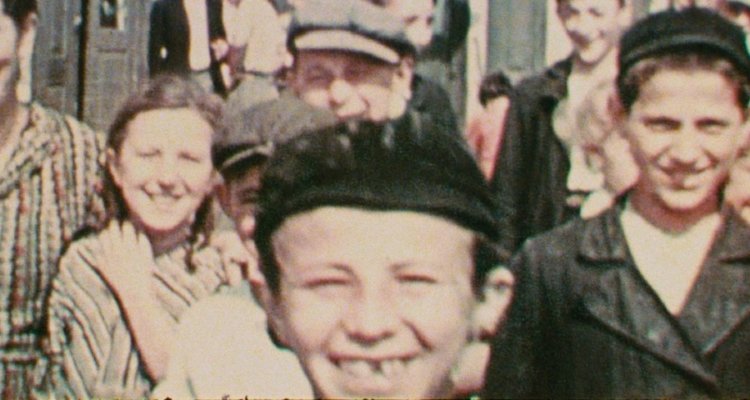A poetic meditation on film, history, and loss, “Three Minutes – A Lengthening” gives a glimpse into a lost world and then unpacks just how much can be learned from that brief fragment. While on a grand tour of Europe in 1938, David Kurtz, a Polish-American man, traveled to Nasielsk, the town of his birth, and brought with him a 16mm camera filled with Kodachrome, a novelty at the time. He took three minutes of footage there that was embedded in a larger film of his travels and, like many such films, it sat forgotten in a basement for years. Around 2009, David’s grandson Glenn Kurtz rediscovered the footage and recognized that the once-ordinary film was now an extraordinary historical document – the only remaining visual record of a Jewish community that was annihilated in the Holocaust.
READ MORE: Venice Film Festival 2021 Preview: 12 Must-See Films To Watch
Director Bianca Stigter takes the 1938 footage and uses it as a prism, looking at every detail to see how much of prewar Nasielsk can be exhumed. Accompanied by narration from Helena Bonham Carter, we see the same footage again and again, aided by editing tools, inhabiting the moment as long as possible as if trying to peer into every nook and cranny. At first, not even the name of the town was known, but Kurtz was able to ascertain it by learning which grandparent’s hometown had a synagogue with a missing lion on the door (lost in a pogrom). The luckiest strike of fortune was finding Maurice Chandler, one of the town’s few survivors of the war, who appears in footage as a boy, his face unmistakable even at ten years old. Chandler is able to explain general aspects of life in Nasielsk, a childhood he remembered as comfortable and happy. We learn how the town’s claim to fame was a factory making ornate buttons, many of which can be seen in the film, and Chandler’s best story involves a boyhood button heist – cutting them off of coats left unattended during religious services and only briefly getting away with it.
READ MORE: Fall 2021 Movie Preview: 60+ Must-See Films
The lighthearted moments of everyday life depicted in “Three Minutes” are made poignant by the gaping loss that the film represents. While looking at the same footage magnified, we hear a detailed first-person narration of the town’s Jews being taken away, first to the ghetto, then to the camps. As we hear the horrible experience of those days of terror, the lack of imagery is merciful, as the words need no embellishment. “Three Minutes – A Lengthening” shows just how fragile our history of the Holocaust is, especially as the last survivors pass on. By showing once-lost footage that was only restored in the nick of time before being destroyed by vinegar syndrome, along with a verbal testimony that only survived the Nazis by being buried in the ground, the film invites reflection on the physical aspect of preserving history. Many ephemeral films of the sort Kurtz made in 1938 have been discarded or allowed to decay, but Stigter shows that in the right hands, with the right pair of eyes, three minutes can contain an entire world. [A-]
Follow along with our full coverage from the 2021 Venice Film Festival here.

